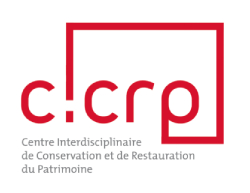
Onsite Assistance and Advice
CICRP responds to requests for assistance related to the conservation of historical materials, works, or monuments or in a restoration project.
CICRP intervenes in these domains:
- Historical buildings and sculptures (stone),
- Urban art (contemporary art),
- Contemporary architecture (materials and polychromy),
- Mural paintings,
- Biological alterations.
CICRP contributes to the diagnosis of alterations, gives treatment recommendations, and intervenes during the restoration phase which supports the owner’s project or the prescriptions given by the authority of the Conservation Régionale des Monuments Historiques (The Regional Conservation of Historical Monuments):
- help with diagnostic (characterization of materials and pathologies) and methodological approaches (analysis or preliminary studies).
- help draft the specifications for the study or considered work: characterize the issues, advise on analytical protocols, recommend replacement materials, etc.
- give opinions on restoration protocols or analysis reports.
- give recommendations for post-restoration follow-up.
Preventative Conservation
At the request of the contracting authority, CICRP can make a diagnosis of conservation conditions and problems in order to recommend the necessary interventions and allow the applicant to define and implement a preventative conservation policy. CICRP is also involved in building renovation projects or the development of new reserves which houses items that are not displayed in exhibition halls.
Thus, it can help the applicant understand the many questions concerning environmental factors–climate, lighting, biological contamination, pollution–and contribute to the implementation of scheduled activities: preventative conservation plans, preventative and safeguard plans, reserve projects, “collections worksite” which concerns the tracing and conservation of the works, etc.
Out of all of the domains of preventative conservation, CICRP focuses on developing competencies in the domain of biological alterations and, specifically, infestations.
The Center can identify the origins and components of the contamination, define the treatment protocols, and participate in monitoring of disinfestation/decontamination (insect and mold) projects. It also recommends appropriate prevention measures.
Equipped with an entomology laboratory, CICRP conducts studies and research on the issues concerning insects that threaten historical works as well as means of treatment and prevention.
Requests should be made to CICRP management (info@cicrp.fr). Assistance missions outside of the Provence-Alps-French Riviera region (PACA) are subject to an agreement specifying the content and methods of the CICRP intervention.

